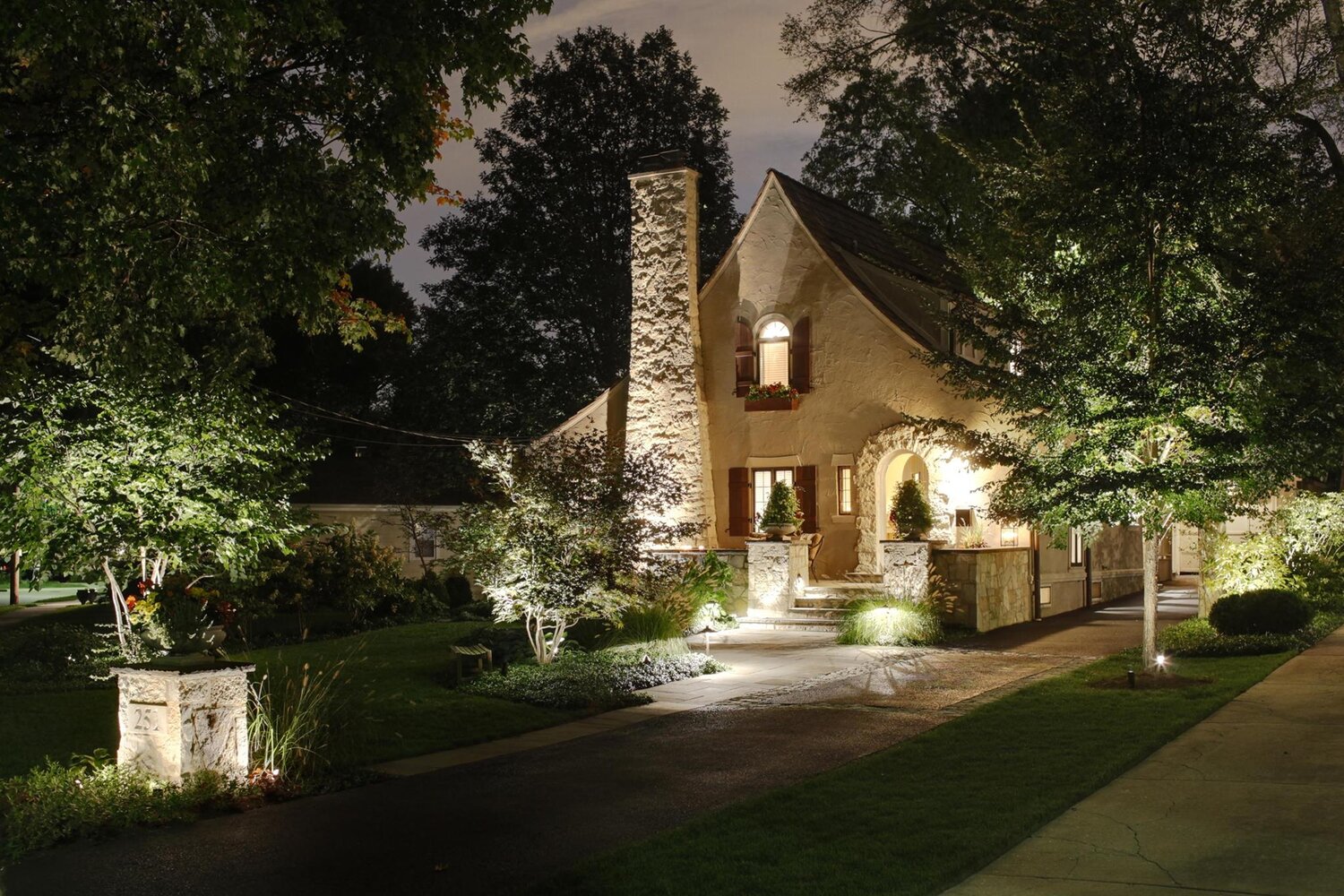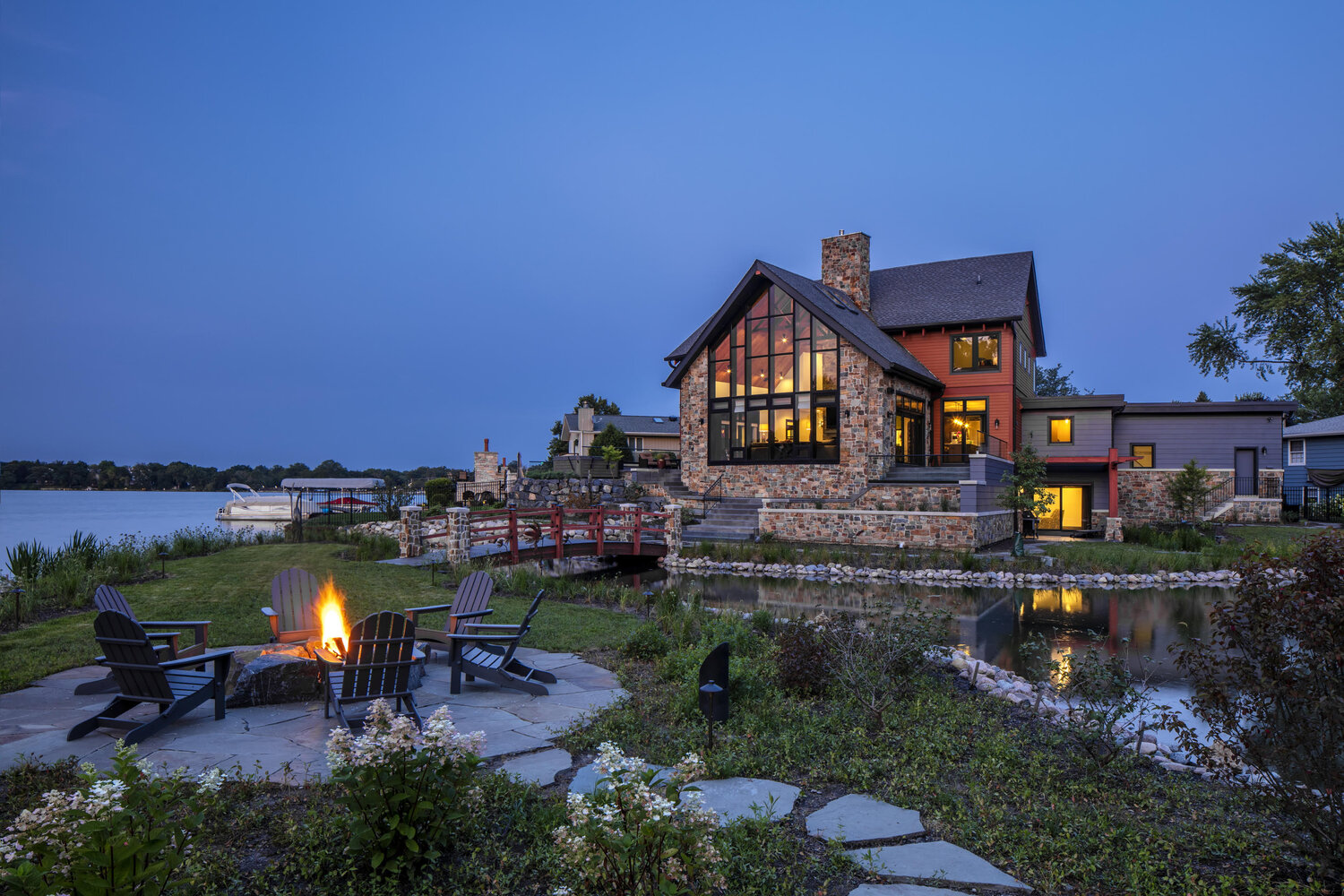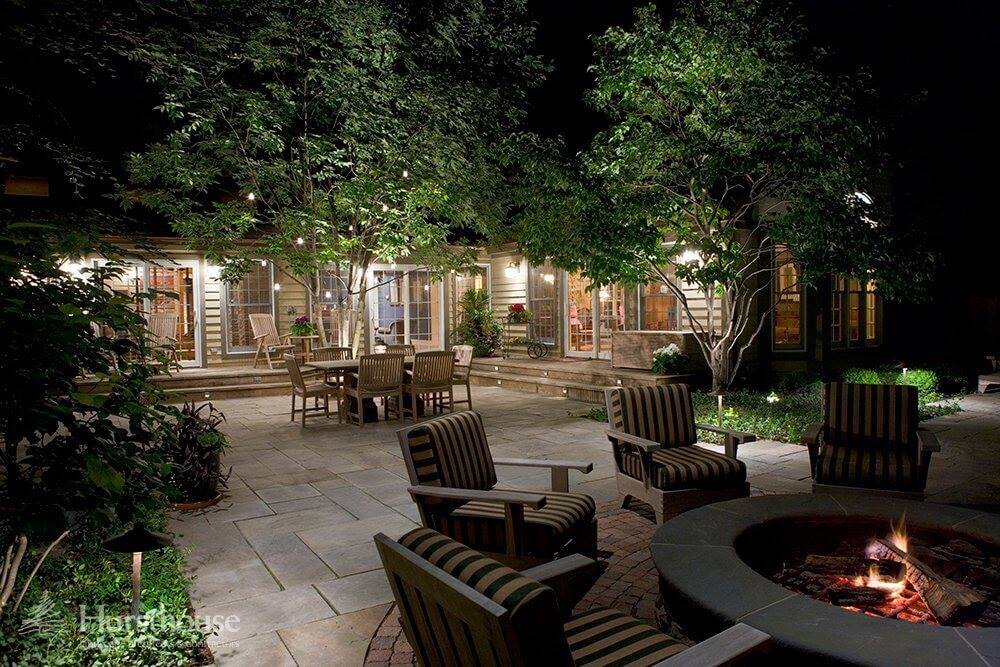Just as there is an inherent connectedness in nature, a sustainable, beautiful home and its surroundings are linked together through complementary design elements and philosophies.
A well-appointed home that allows for a lighter living in the earth is truly an inside-out proposition, from architecture to interior fundamentals to landscaping. That holistic approach to resilient home design is what inspires and drives the collaborative work of NextHaus Alliance.

Rooted in resiliency
Approaching landscape design with a mindset of sustainability involves the interplay between plantings and hardscapes and how the outdoor space connects to the indoor space and the people who live there.
Beauty, of course, is a key consideration in a landscape design. Choosing color palettes, textures and shapes of flowers, plants, shrubs and trees reflects your personal tastes and interests that carries through from the indoors to the outdoors.
From a practical perspective, stormwater management is an increasingly important part of landscape design today, especially in the Chicago area, where infrastructure hasn’t always kept pace with development and there have been more significant rain and flooding events in recent years. Compare today’s larger homes and garages, for example, to previously built smaller homes with smaller driveways, which have less surface runoff.
Another relevant issue in stormwater mitigation is the loss of mature trees. Pests like the Emerald Ash Borer and Asian Longhorn Beetle have led to major tree losses and, with that, declines in absorption capability.
There are landscaping solutions that can help deal with surface areas that aren’t able to absorb stormwater and hence tend to flood. Now, homeowners can choose from hardier plant materials, including native plants, along with more resilient materials that can help with water containment. Water mitigation is increasingly incorporated into our landscaping projects, encompassing hardy plantings as well as mechanical and physical systems. It’s part of an effort to ensure the overall integrity of a client’s home and to also contribute and help enhance the greater community.
Rain barrels are one basic component of stormwater management that can be added to a home’s outdoor area. Homeowners can also create “rain gardens” with plants and layouts designed to hold water in that part of a yard. Trees, shrubs and plants in rain gardens and other carefully designed landscape areas can capture and hold water on the surface of the plant material, where it can be released more slowly into the general landscape. Fortunately, there are many great plant materials that can accomplish this function, including native plants, grasses and trees that are particularly resilient in the home soil and climate. Native species of oak trees are one example of a resilient tree that also host important species as part of a balanced environment.

The Next Wave of Sustainable Landscape in a Lakefront Home
A recently-completed home in Lake Zurich, Ill., a project that involved members of the NextHaus Alliance, illustrates the benefits of resilient landscape design. For this lakefront property, we worked with the homeowners to choose a broad variety of native plants and resilient materials. While the lake levels are managed, there is a higher water table, and homeowners must collect and discharge water to the lake in a managed way.
One solution we added was a stream bed, which is an intermittent water feature and, if not needed for stormwater runoff, as a dry stream. Along the lake-facing edges of the property, we planted native grasses and perennials that lend color and a dense texture. In addition to privacy, tall grasses serve as a deterrence to Canada geese, which can make a mess on grassy areas.
“How do you want to live?” is the first and most important question we ask people when they are considering their landscape design. For those who want to live more sustainably, there are more ways than ever before to live lighter on the earth and more picturesque from their corner of it.
Bob Hursthouse is president of Hursthouse Landscape Architects and Contractors, a core member of NextHaus Alliance. Learn more at hursthouse.com.
